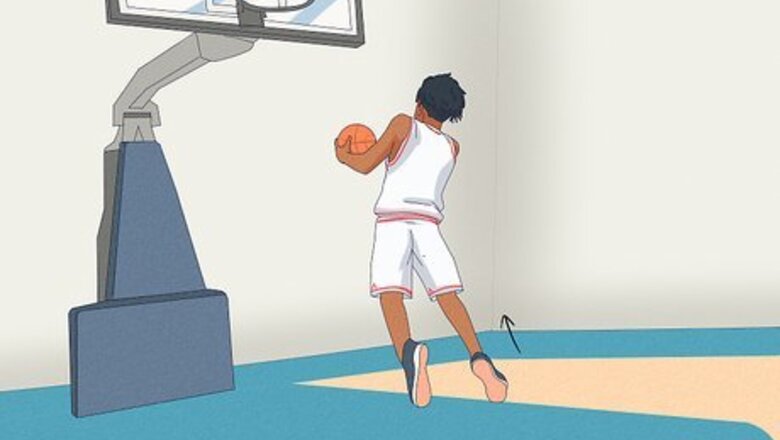
views
Executing the Basic Windmill Dunk

Jump in the air. Like all dunks, a windmill requires you to jump high. Start a windmill dunk by approaching the basket while dribbling, then jump toward it as high as you can.

Hold onto the ball with one hand. One of the distinctive features of a windmill dunk is that it is executed with one hand. As you jump in the air, you must take the ball with you in your dominant hand.

Rotate your arm. While jumping in the air and holding onto the ball with one hand, swing your fully extended arm around in a circular motion. This movement should be smooth and even, like a windmill going around.
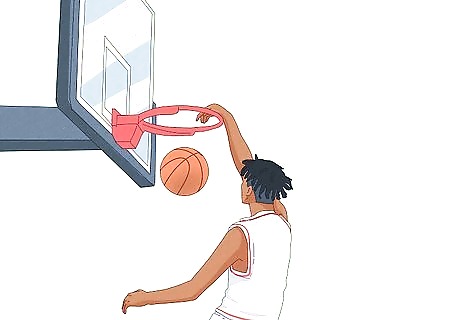
Dunk the ball in the basket. As your extended, rotating arm approaches the basket, slam the ball in the basket. This should happen as quickly and smoothly as possible. After the ball goes in, return your arm to a normal position as you hit the ground.
Improving Your Technique
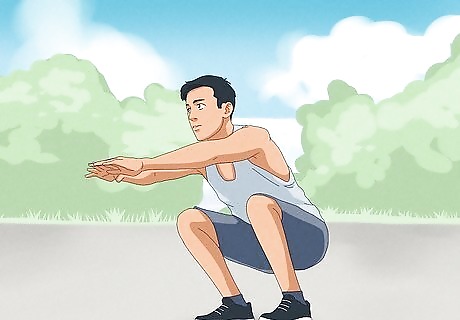
Build your strength. High jumping is essential for doing a windmill dunk, so train to build strength in your legs and lower body, especially your calves, quads, and glutes. Squats, lunges, hamstring curls, and leg presses are all good exercises to try for this purpose. To improve your jump height and leg strength, try wearing strength shoes, which are shoes with a platform in them, while you do plyometric exercises like high knees, butt kicks, and sprints.
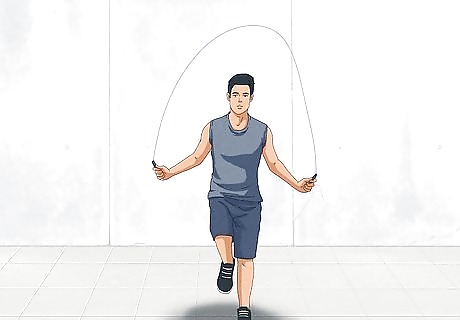
Improve your vertical movement. Whether or not you are tall, you will have to have excellent upward movement in order to do a windmill dunk. Strength and ability combine to make powerful jumps. Try doing skips, squat jumps, and toe raises as practice to improve your ability to launch yourself upwards. If you are a shorter or average sized player, dunking can be difficult, though not necessarily impossible. Practice jumping, and work with a coach to determine if dunking is within your reach.
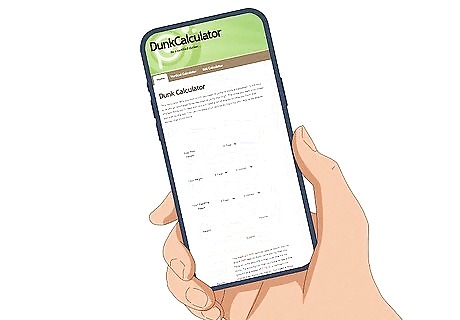
Use a dunk calculator. If you need help figuring out how high you need to jump in order to make a dunk, try using a dunk calculator. Enter in your height, the rim height, and extra height for the dunk itself to calculate how high you need to jump in order to dunk the ball. You can then use this information in order to practice achieving the jump height you need.
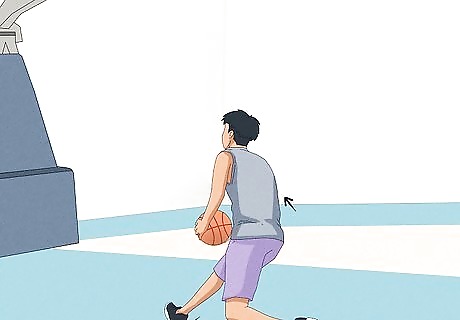
Jump with one foot. Some players prefer to do dunks by jumping with two feet. However, you may be able to achieve your maximum jump height more easily if you jump with one foot while reaching upwards with your arm. Jump with your non-dominant foot and keep the ball in your dominant hand. For example, a right handed player will jump with the left foot while rotating the right arm.
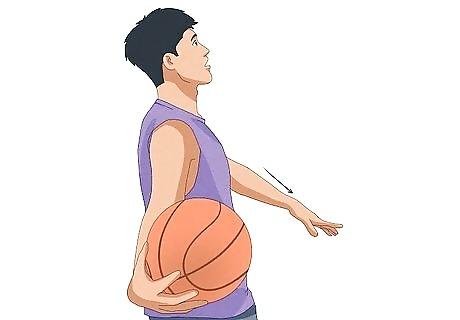
Use your other hand for balance. If your jumping or dunking feels unsteady, you may need more balance in the air. As you jump to make the windmill dunk, hold your non-dominant arm either at your side or up in the air. Experiment with each position to see which one gives you better balance.
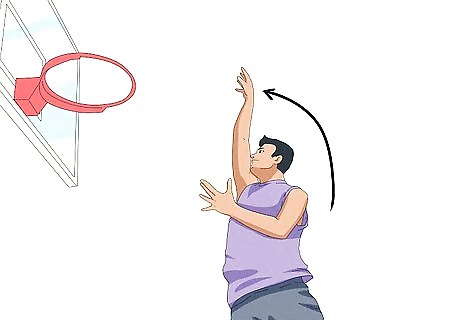
Practice jumping without a ball. Before attempting a windmill jump, you can practice leaping toward the basket with empty hands. This allows you to get a sense of your maximum height, and to practice the basic movements. Jump upwards and rotate your arm just as you would if you were holding a ball, until the movement feels balanced and fluid.
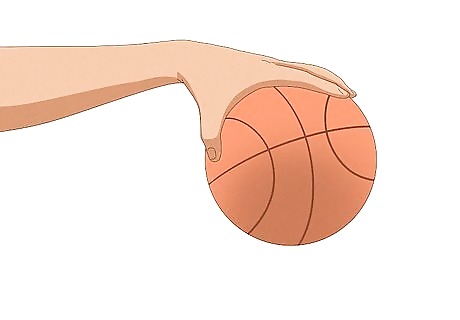
Practice with smaller balls. Holding onto a full-sized basketball while learning to do a windmill dunk can be difficult. In order to build your familiarity with the move, you can try dunking a smaller ball (such as a tennis ball or mini basketball) until you feel confident jumping and rotating your arm. Then, move on to practicing with a full-sized basketball.
Trying Variations
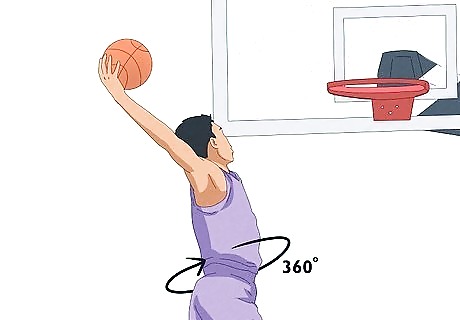
Do a 360 windmill dunk. Once you’ve mastered the basic windmill dunk, you can try some variations on the technique. A popular move is the 360 windmill dunk. To do this, spin your body in a 360 degree turn as you dunk the ball in the basket, windmill-style.
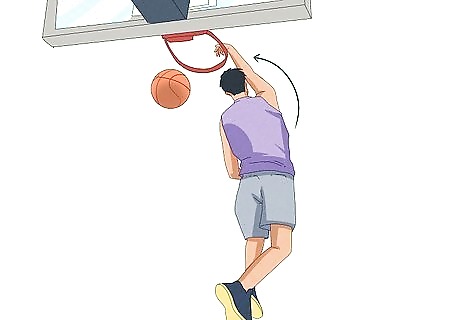
Try a reverse windmill dunk. Another popular and challenging variation on the basic windmill dunk is to try it backwards. Unlike a regular windmill dunk, you perform this move by holding onto the ball with both hands. Jump while facing away from the basket and bring the ball down toward your chest with both hands. Once you are up near the basket, rotate the ball behind your head (using both hands) and dunk it into the basket.
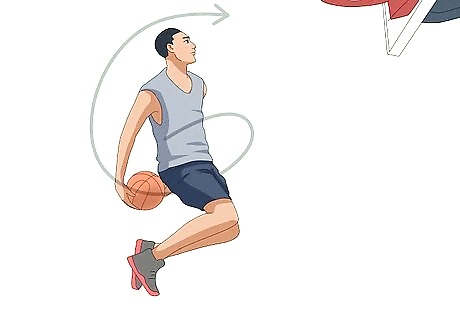
Invent other variations. You can develop your own personal style of windmill dunking, once you are familiar with the technique. Be creative and combine a windmill dunk with other dunking and dribbling techniques. For instance, you could work with another play to try an alley-oop windmill dunk.


















Comments
0 comment